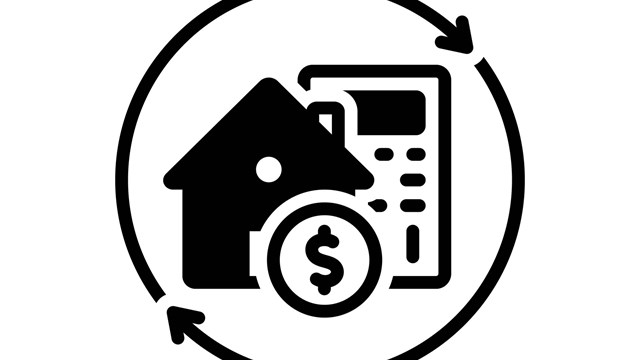
Mortgage financiers are gearing up for a different lending landscape in 2007. To succeed in the coming year, lenders will need to pay attention, look around and get in front of trends. Here are a few trends we can already foresee:
The Return of Functional Borrowing
We anticipate that loans taken in 2007 will be more functional—like home equity loans for education, debt consolidation and home improvement. The tax deductibility factor in home equity lending will keep it an attractive source, unlike the past few years when consumers were heating up the market by refinancing first mortgages with short-term equity lines of credit. Next year, we predict a more traditional market place with re-fi’s [refinancings] being for traditional mortgage products rather than as home equity liens or loans. The primary reason for this shift is the change in the interest rate environment. Recently the first mortgage re-fi rate has gone to 6 percent. Prime is 8.5.
Security Will Be King
We expect all lenders to be more concerned with security than ever. These fears have been fueled by continuing stories about compromised customer data. We forecast that lenders will want higher levels of security—probably encryption for all data. In fact, in anticipation of this demand, we will be encrypting all of the data we exchange with the lenders we serve, whether or not they request it
Continued Streamlining of the Mortgage Process
Lenders will be looking at streamlining and doing things better—not to mention faster—because the slowdown in the market means increased competition for each customer. We know the drop off in the re-fi market will continue. We expect that to lead to increased competition for every loan. And lenders will be playing in an environment where that competition will come from some unusual places, like the new banks in Wal-Mart stores.
Nationwide Home Prices to Rise — But Not in NYC
We expect price appreciation to weaken, but remain positive in 2007. Davis Stiff, Fiserv’s chief economist, is forecasting a modest 1.2 percent price appreciation next year for most of the U.S. This contrasts with a 7.1 percent appreciation in 2006. Stiff does expect prices to fall in metro areas where speculators and investors drove up the prices over the last few years, however. He foresees that this home price correction will hit some metro areas in late summer, on the leading edge of a home price correction that will hit about 90 metro areas later in the year. These are mostly places where speculators and investors drove up prices to unsustainable levels. On the other hand, Stiff forecasts price declines in New York City, as well as in most California and Florida markets over the next two to three years.
A Slow Return to Home Buying
Homebuyers who have been sitting on the sidelines will slowly move back into the housing market in 2007. That’s because the fundamental housing demand drivers are strong. These include increasing rates of household formation; a moderately strong job market and, although mortgage rates are rising, they are still low by historical standards. Purchases of primary residences should slowly recover as prices stabilize, but investors and speculators have been driven out of most markets. This means that markets where recent demand was driven mostly by speculators—such as Las Vegas and Miami—will see lower sales activity for a long time.
A Strong Secondary Market
Most Wall Street firms are reporting record volumes of loan acquisitions in 2006 and are planning for another record year in 2007. To facilitate this goal, we see many Wall Street firms either purchasing mortgage companies (like Merrill Lynch’s recent purchase of First Franklin Mortgage) or taking a financial stake in mortgage companies (Goldman Sachs recently acquired an equity stake in Down-Home Financial). Wall Street firms are generally becoming more creative in their ability to maintain high volumes of mortgage acquisitions. This trend will continue for the unforeseeable future.
Wall Street will also get into the broker’s space by buying up origination channels for sub-prime lending. So, instead of buying portfolios from sub prime lenders, they’ll use their own channels.
Diversity Spending = Major Initiative
Banks will aggressively cultivate loans to more diverse markets in response to the changing demographics of their customer base. Spurred on by growth in both the African-American and Hispanic populations and President Bush’s push to increase minority home ownership, minority homeownership reached a record rate of 49 percent in 2002. That growth will continue. Lenders will initiate major marketing campaigns aimed at these groups in 2007. In addition, they will seek to do more business with minority-owned outside vendors who are already familiar with the factors important to minority borrowers.
E-signatures Moving Towards Reality
Banks will continue to struggle to implement e-signing of loan documents in 2007. Consumers have been slow to accept this technology, so lenders have chosen to introduce electronic documents gradually. They started by sending federal disclosures electronically. The form is nothing more than a precursor to acknowledging a mortgage, but by having consumers accept it, banks are getting the consumer in the habit of using the web. It’s another step towards e-signatures.
Locking in the Consumer—Innovative Relationships
Lenders’ success in 2007 will come from meeting multiple needs for each customer. This trend has been taking shape for the past few years. Consider Bank of America’s recent statement that customers will get free stock trades from their broker-dealer—or Wal-Mart’s recent announcement that they will offer customers $4 prescriptions. Why would enterprises of that scale do these things when the market isn’t even asking for them? Because they can. They are taking a market position that only others of that scale can offer, and because adding multiple services cultivates a growing dependence by their customers. They will continue to use their size and power to hook the customer in 2007, making it harder to leave. There are two lessons that lenders will need to take to heart in 2007: one, learn ways to provide value in the marketplace from other industries and two, know what the customer wants before they know it themselves.
In 2007, we also expect the emphasis to be on the expansion of the relationship with the customer, not in the product arena. Like Wal-Mart, successful lenders will go after more penetration of a customer’s needs. They will ask themselves how they can do more for the customers they already have. By giving these existing customers more value they will be able to strengthen and broaden the relationship.
Home Value Websites = Headaches
With the continuing proliferation of home value websites, consumers will become more informed, curious and confused about how much their homes are actually worth. Value estimates among home value sites can vary by 20 to 40 percent, so there will be more borrowers “value shopping” before applying for home equity loans and re-fi’s. We see this phenomenon having an impact on loan approvals, because it will encourage borrowers to challenge lenders’ value limits. This will affect lenders who don’t have clear collateral valuation policies and alternative valuation, low-cost products in their cascade. Lenders who don’t respond quickly and satisfactorily to value challenges will lose precious prospects to competitors.
Survival of the Fittest
Like it or not, all of us involved in the mortgage lending industry will be playing in a Darwinian arena in 2007. Survival of the fittest will reign. Lenders will need to better be aware and more responsive to the quick change in the market. If they listen hard, they’ll be able to tune into leading edge opportunities, product innovations, regulatory issues and industry trends that will have a positive impact on their future.
Lee Howlett is the president & chief operating officer of Fiserv Lending Solutions, headquartered in Brookfield, Wisconsin.






Leave a Comment